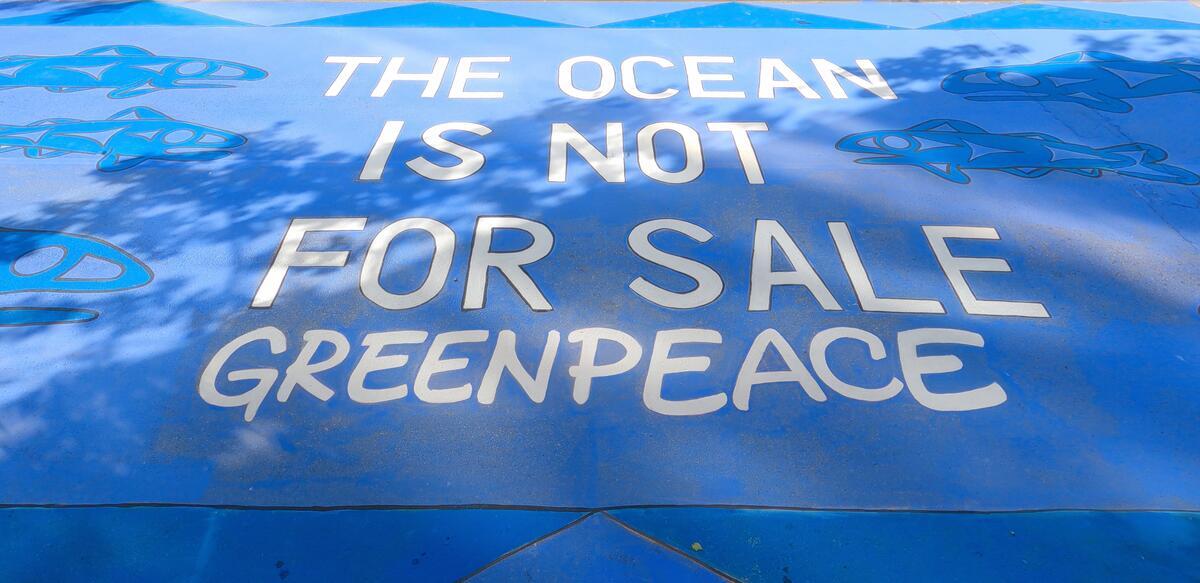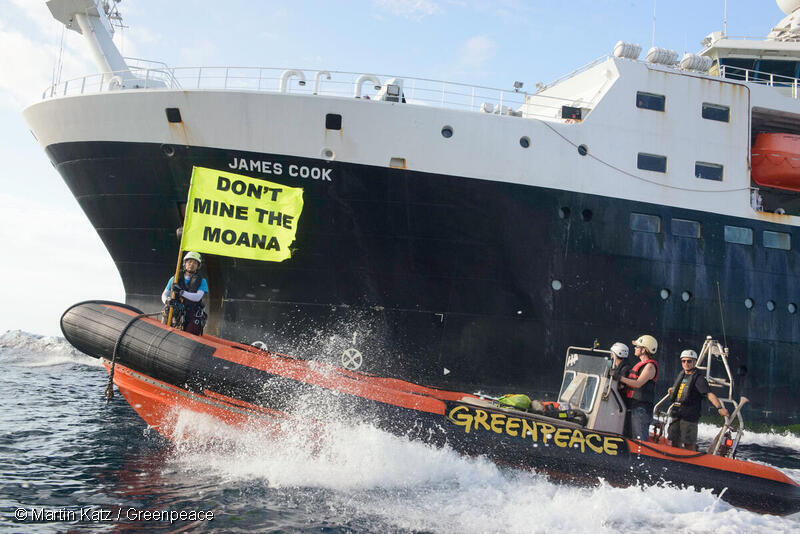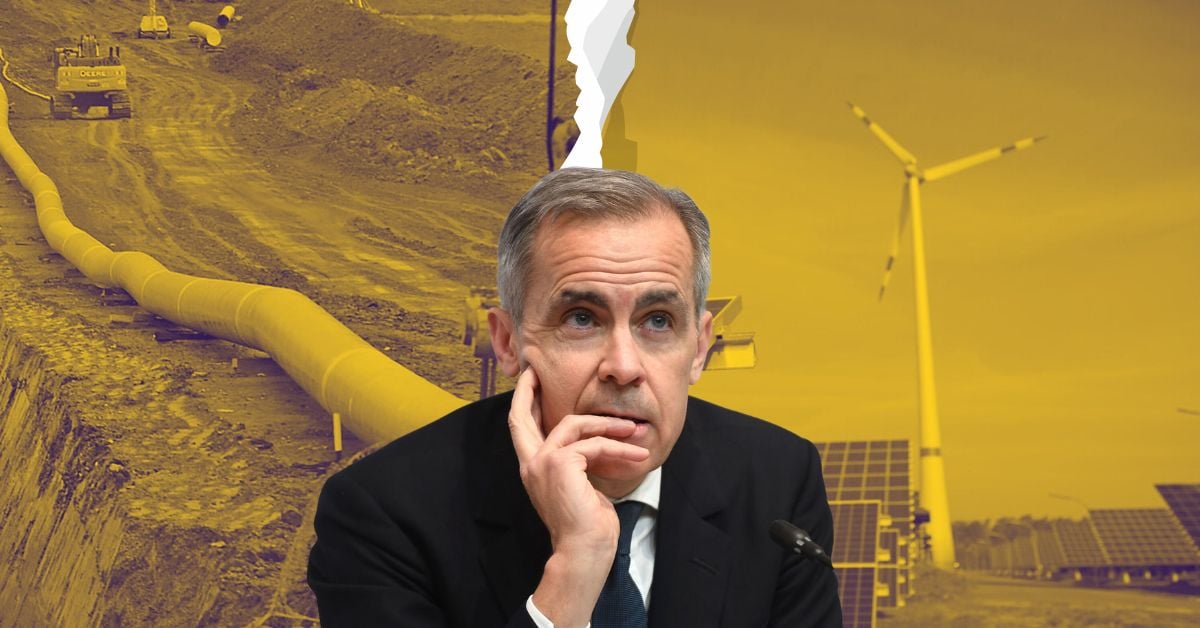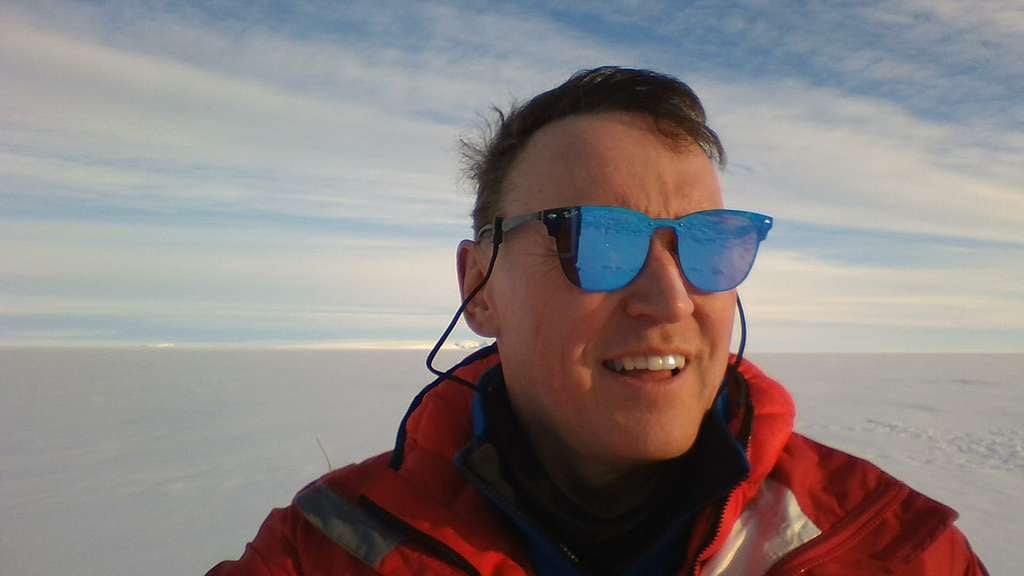
On the edge of western Antarctica sits the world’s most unstable glacier, held back from falling into the sea by a slab of floating ice. Climate scientist David Holland describes this slab of ice — more formally known as the Thwaites ice shelf — as a cork in an Antarctic wine bottle lying on its side, securing the wine, or in this case, the Florida-sized Thwaites glacier in place. If the ice shelf were to collapse, the amount of water in the Thwaites glacier would raise sea levels by two feet. And if Thwaites’ collapse triggers the fall of nearby glaciers, global sea levels could rise by up to 10 feet.
On the heels of last month’s IPCC report — in which the authors project escalating climate impacts, losses and damages with every increment of warming — we spoke with Holland while he was sailing back from the Thwaites glacier region to see how it’s doing.
Holland, a professor at New York University, pursued his education at McGill University and currently resides in the small, coastal village of Brigus in Newfoundland. We caught up with Holland just as his ship was approaching New Zealand, 10 days after departing Antarctica, en route back home.
For the past two months, Holland and his colleagues were in a remote region of the West Antarctic Ice Sheet, aiming to study the Thwaites amid unpredictable weather, freezing temperatures, and malfunctioning equipment. Large icebergs blocked their path for most of their voyage, but near the end, they were able to briefly helicopter to the notorious ice mass — also called the “Doomsday Glacier.”
Our conversation has been edited for length and clarity below.
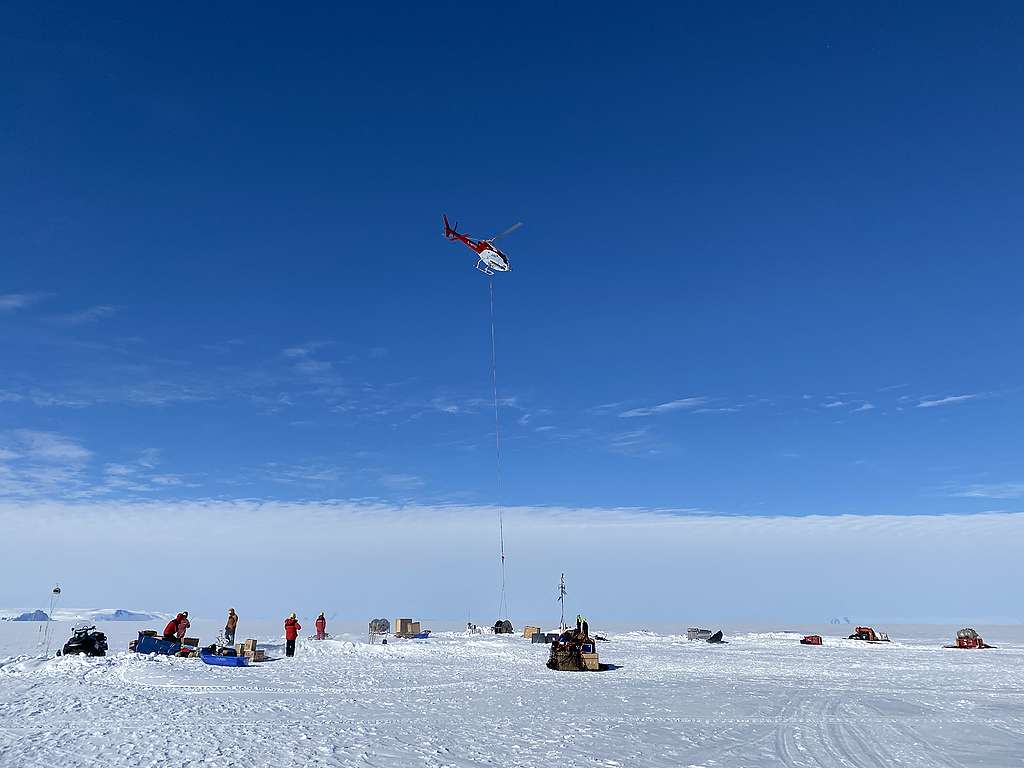
What brought you to Thwaites?
It took myself and colleagues decades to really focus on Thwaites as the central lynchpin for sea level change for the planet. And if it goes: it’s a problem; and if it doesn’t go, not a problem.
This year in particular was the minimum of Antarctic sea ice on record — which is an interesting story in itself and another discussion — but the little bit of sea ice in Antarctica was all in front of Thwaites, and with this ice breaker we tried to crack through it, but could not make it. There was just too much ice.
So after much frustration and disappointment, we went to the glacier adjacent called the Dotson Glacier because we had all our kits, helicopter, fuel and made the best of it. We did the same science there. But we did not get on to Thwaites for most of this year to do what we wanted to do, to get to the most important part: western Thwaites. It escaped us.
What specifically are you studying?
Back in the day, Canada was covered with an ice sheet the size of Antarctica. That ice sheet covered Vancouver, went out to the Rocky Mountains and on to the Pacific Ocean. Where you have the beach in Vancouver is where the ocean and land meet. If you picture covering that with a kilometre or two of ice out to sea, the part on the ocean will be floating, which is the ice shelf, and the part on the land is grounded. And that transition from ocean to land where the ice is grounded — that’s all of our fascination, which we call the grounding zone.
That’s where the sea level really changes as the ocean either advances or retreats. That’s where we wanted to go and install our instruments to observe: is there warm water there? Because if there is, then Antarctica retreats. If there’s not, Antarctica does not. It’s relatively straightforward. Warm water melts ice. And it’s the ocean, not really the atmosphere in terms of warming the planet, that simply causes the ice to break and all these other things happen. But the starting point is warm water going under ice sheets, creeping to the grounding zone, bringing them to their knees. That’s where things fall apart.
Why is Thwaites so important?
The ice shelf itself is now fractured and breaking. I was shooting some video in the helicopter — did you see the scene in one of the Star Wars movies where Luke Skywalker is going after the Death Star and he enters it? That’s what this was. This was the white Death Star. Our pilot was flying us through that. You’re going through all these massive icebergs, kilometre after kilometre, looking for holes we can get our probe in.
Warm water underneath is melting it really quickly. I think it’s one of the largest if not the largest elevation drops on Earth. The relevant part is: the ice shelf, if you picture a bottle of wine on its side with a cork — the ice shelf is the cork that’s holding back the wine. The ice shelf is the cork that’s keeping Thwaites glacier in place. And it looks like it’s going, going, going. And once it goes, there’s nothing to stop Thwaites, which is this massive chunk of ice, from pouring into the ocean. So that’s the issue. How that will happen, we don’t know. But there’s nothing to stop it. The point of the science is to try to figure out: will it happen? And if so, can you predict it?
You mentioned earlier that it’s a perfect storm: you have the most unstable ice shelf and then you have the warm water underneath it. What are the risks of warm water spreading to other ice shelves in Antarctica?
That’s exactly the kind of question my colleagues and I ask and then we sit around and say, “Well, it happened here. Could it happen there?” And then we launch scientific expeditions, create computer models, and study it.
A little hint of that is in east Antarctica — which we’ve been ignoring so far. There are some very large glaciers that are looking a little bit like Thwaites. One is called the Totten Glacier, and the Denman. There are actually four large glaciers in the vast area of east Antarctica that we now have our eyes on as of a year or two ago.
East Antarctica is extremely difficult to get to. West Antarctica is very difficult, east is even more difficult. It’s way over on the other side of the continent, and getting a ship over there is a challenge. But I don’t have an answer right now, other than that’s very plausible. Things that are not plausible, we don’t investigate.
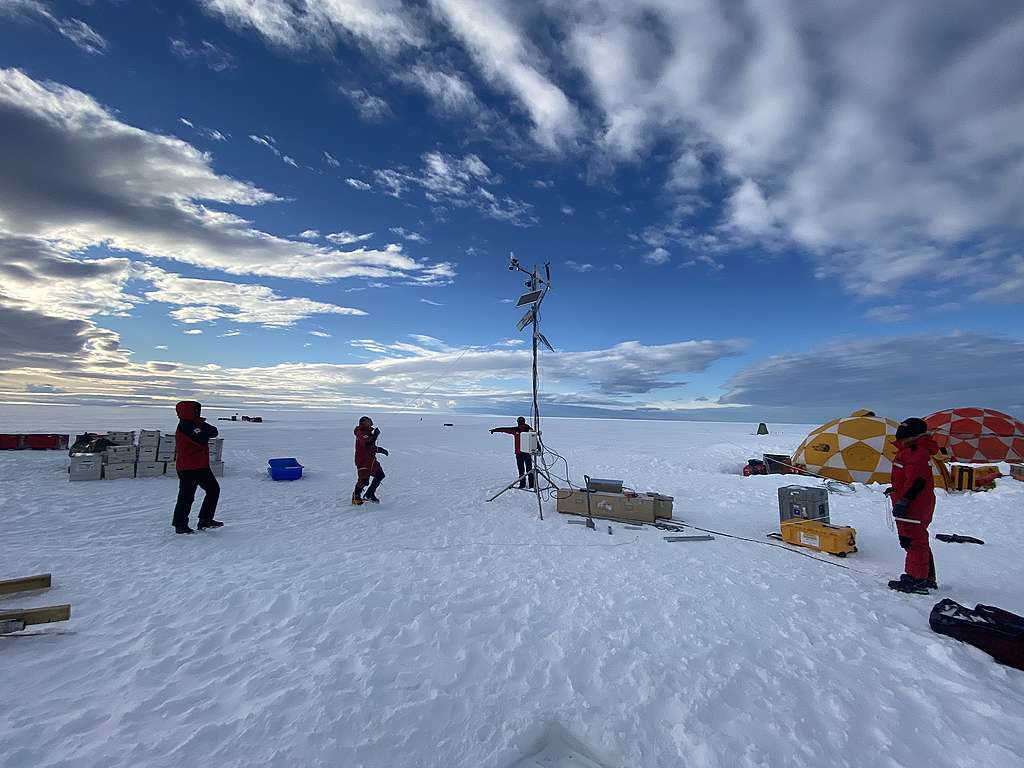
What does the state of Thwaites tell you about what’s going on in the ocean?
What really took me back was a study that came out two years ago by one of my colleagues in which he took our planet and did two experiments with a climate model. One, he ran our past climate of the last 200 years without any human greenhouse gases. And then he did the experiment but with greenhouse gases added to the model, as we have added to the planet the last 200 years. And what’s beyond mind-boggling, with greenhouse gases, the wind near Thwaites changes and that’s what brings the warm water. It’s mind-boggling how gases somewhere else on the planet are warming the Arctic, changing the wind, changing the ocean current which are delivering the warm water.
Any final thoughts or points you want to highlight?
Our young people — there’s a swelling sense of their care for our planet. That’s becoming more and more evident, which is fantastic. We’ve really got to push them as well. We have to train them in the specifics of the environment: science, technology, engineering, mathematics… We really need to encapture their imagination with the joy of exploring and understanding our planet hands-on. This problem is generational. And clearly it’s going to absorb humanity for decades if not centuries to come.
**
To learn more about Holland’s research, visit his faculty page.
To read what Greenpeace has recently been up to in the Antarctic, connecting the climate crisis and our Protect the Oceans campaign, check out these recent stories.

